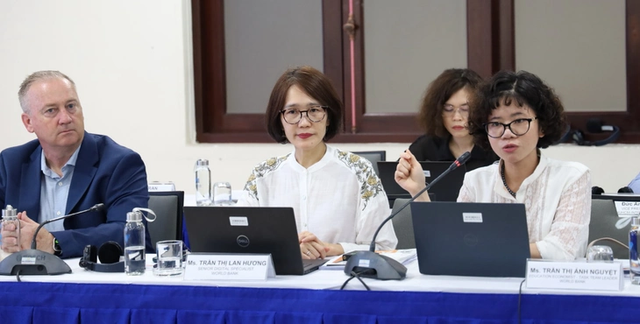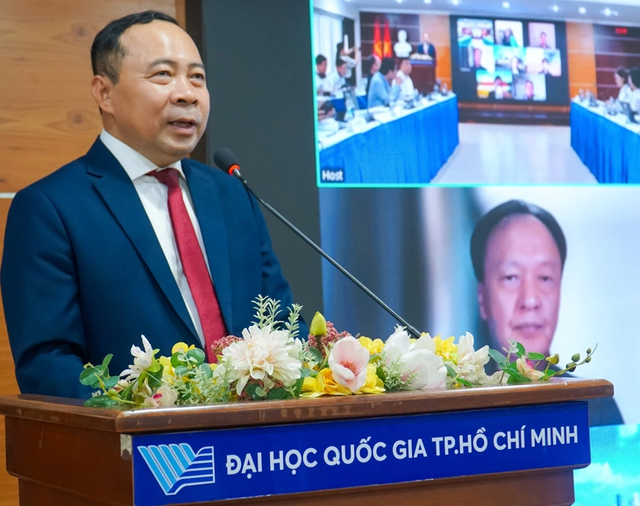
World Bank expert pinpoints weaknesses in Vietnam’s semiconductor workforce training
A World Bank (WB) expert has identified several key weaknesses in Vietnam’s semiconductor workforce training and recommended that businesses participate in the training process to ensure output quality aligns with practical industry demands.
The expert gave her ideas at the workshop titled 'Consultation on the Assessment Report on Human Resource Development for Vietnam’s Semiconductor Industry,' jointly organized by the Vietnam National University-Ho Chi Minh City (VNU-HCM) and the WB on Saturday.
The workshop attracted more than 70 representatives from government agencies, domestic and international universities, international organizations, and hi-tech enterprises.
According to Ekua Nuama Bentil, senior education specialist, the WB’s edtech co-lead, VNU-HCM holds significant advantages in scaling up semiconductor workforce training.
The university already implements programs modeled after top-tier global technical institutes, and its member institutions have collaboratively developed specialized curricula in semiconductor technology.
VNU-HCM also has an innovation startup center that maintains close ties with businesses and research institutes.

The World Bank’s education economist Tran Thi Anh Nguyet (R) presents survey findings highlighting a notable gap between the current skill levels of the semiconductor workforce and the industry demand. Photo: Thien Thong
Domestic technology companies such as FPT and PFIEV have established labs directly at the university, while international firms like Faraday and Synopsys have partnered with the university to offer short-term training courses to students.
“This lays the foundation for building a high-quality human resource training ecosystem in the semiconductor sector,” Bentil emphasized.
However, she also pointed out numerous challenges facing Vietnam’s semiconductor training efforts.
These include a lack of standardized curricula, uneven infrastructure across universities, a low proportion of PhD-qualified instructors, limited research output, and informal partnerships with businesses without formal mechanisms in place.
“Enterprises should view VNU-HCM as a primary talent pipeline and actively engage in the training process to ensure graduates meet industry requirements,” she recommended.
Building semiconductor ecosystem
Professor Dr. Le Quan, director of the Vietnam National University-Hanoi, emphasized that training should aim to develop human resources for the entire semiconductor ecosystem, with a focus on high-level personnel, and align domestic education with international cooperation.
He also hoped the WB would offer stronger recommendations regarding university training strategies.
Associate Professor Dr. Tran Le Quan, president of the University of Science under VNU-HCM, acknowledged that universities still face many difficulties in training semiconductor personnel.
In particular, the operation of labs remains a major challenge due to current investment mechanisms, which only provide one-time funding, leaving schools to bear all operational costs. This creates financial burdens for students and affects training quality.

Associate Professor Dr. Vu Hai Quan, director of the Vietnam National University-Ho Chi Minh City, speaks at the workshop. Photo: Thien Thong
Professor Dr. Phan Bach Thang, director of the Center for Innovative Materials and Architectures, agreed that initial investments without guaranting long-term operations make training systems unsustainable.
He proposed that the WB recommend the Vietnamese government establish a phased investment mechanism: initially covering 100 percent of costs, using the state budget, and gradually sharing costs with schools and businesses once the system is operational.
Gu-Yeon Wei from the John A. Paulson School of Engineering and Applied Sciences at Harvard University suggested Vietnam learn from the semiconductor development models of Taiwan (Hsinchu Park), South Korea (IDEC, KAIST), the United States (CHIPS Act), and Malaysia (CREST).
He proposed building a complete semiconductor ecosystem that includes R&D centers, IC design hubs, scholarship programs tied to job commitments, and shared infrastructure.
From 2025 to 2030, the focus should be on modernizing laboratories, training lecturers, and establishing a national semiconductor center.
The 2030–2045 phase should concentrate on international integration and sustainable ecosystem development.
At the workshop, the WB’s education economist Tran Thi Anh Nguyet presented survey findings highlighting a notable gap between the current skill levels of the semiconductor workforce and the industry demand.
Associate Professor Dr. Vu Hai Quan, director of VNU-HCM, noted that the survey findings not only assess the current state of semiconductor training but also play a critical role in advising policy for the government, educational institutions, and businesses.
The goal is to align training with national development needs and avoid localized labor shortages or surpluses.
“As soon as the WB proposed joint research on developing the semiconductor workforce, we promptly began work,” Quan stated.
Thanh Ha - Tran Huynh / Tuoi Tre News
Link nội dung: https://news.tuoitre.vn/world-bank-expert-pinpoints-weaknesses-in-vietnams-semiconductor-workforce-training-103250427133829346.htm